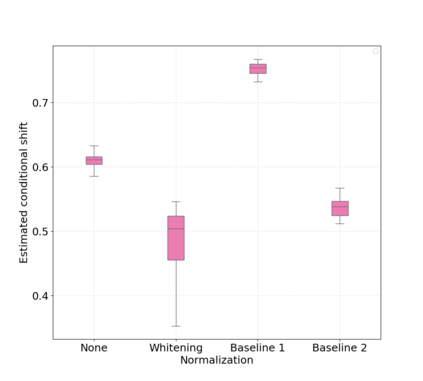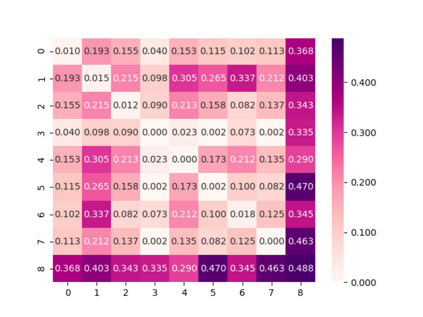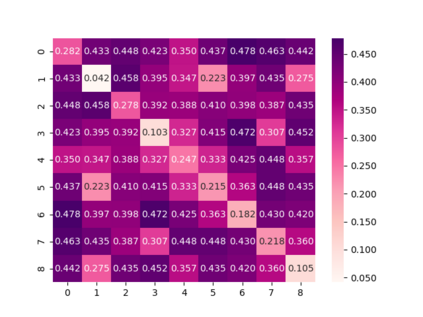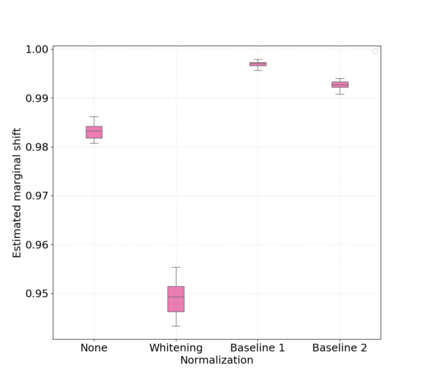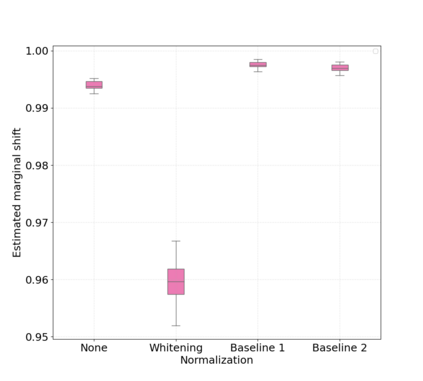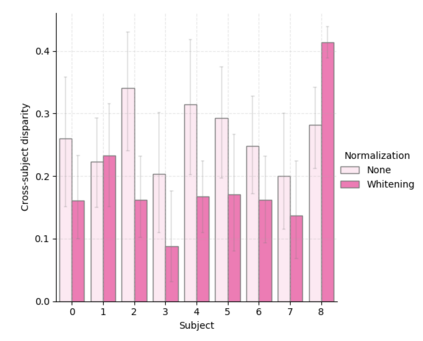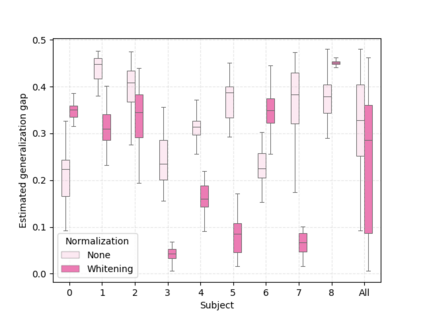Assessment of mental workload in real-world conditions is key to ensure the performance of workers executing tasks that demand sustained attention. Previous literature has employed electroencephalography (EEG) to this end despite having observed that EEG correlates of mental workload vary across subjects and physical strain, thus making it difficult to devise models capable of simultaneously presenting reliable performance across users. Domain adaptation consists of a set of strategies that aim at allowing for improving machine learning systems performance on unseen data at training time. Such methods, however, might rely on assumptions over the considered data distributions, which typically do not hold for applications of EEG data. Motivated by this observation, in this work we propose a strategy to estimate two types of discrepancies between multiple data distributions, namely marginal and conditional shifts, observed on data collected from different subjects. Besides shedding light on the assumptions that hold for a particular dataset, the estimates of statistical shifts obtained with the proposed approach can be used for investigating other aspects of a machine learning pipeline, such as quantitatively assessing the effectiveness of domain adaptation strategies. In particular, we consider EEG data collected from individuals performing mental tasks while running on a treadmill and pedaling on a stationary bike and explore the effects of different normalization strategies commonly used to mitigate cross-subject variability. We show the effects that different normalization schemes have on statistical shifts and their relationship with the accuracy of mental workload prediction as assessed on unseen participants at training time.
翻译:在现实世界条件下,评估心理工作量是确保执行需要持续关注的任务的工人的绩效的关键。以前的文献为此采用了电脑摄影(EEEG),尽管注意到EEG在各学科和体力压力之间有差异,因此难以设计能够同时展示用户可靠业绩的模型。在现实世界条件下,对精神工作量进行评估是一套战略,目的是改进机器学习系统在培训时间对无形数据的业绩。然而,这种方法可能依赖于对经过考虑的数据分布的假设,而这些数据分布通常不会用于应用EEEG数据。在这项观察中,我们提出一项战略,根据不同学科收集的数据,估计多种数据分布之间的两种差异,即边际和有条件的变动,从而使得很难设计出能够同时同时展示用户之间可靠业绩的模型。除了说明特定数据集的假设外,还可以利用拟议方法得出的统计变化估计数来调查机器学习管道的其他方面,例如定量评估域适应战略的有效性。我们特别认为,从从事心理任务的个人收集的EEEEEEG数据,同时运行着运动和智力变化状态,我们提议了一项战略,即根据从不同主题收集的边际变化和有条件变化,根据不同主题的转变,我们已利用了一种统计结构变化的预测性战略,展示了不同结构变化,从而展示了不同结构变化的周期变化,从而展示了不同结构变化的稳定性变化,我们展示了不同结构和思维变化的周期分析了不同结构变化的周期变化的周期变化,我们展示了不同结构和演变变变的周期的周期的周期的周期的周期的周期的周期战略。

